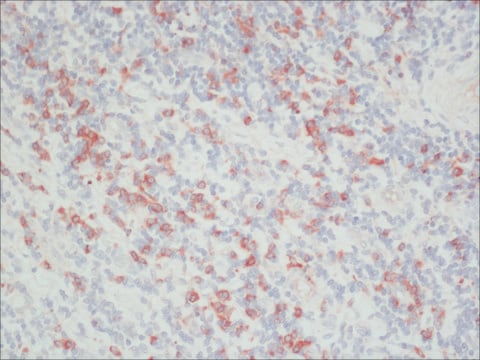12013819001
Roche
Anti-HA-Peroxidase, High Affinity
from rat IgG1
Synonym(s):
antibody
About This Item
Recommended Products
biological source
rat
Quality Level
conjugate
peroxidase conjugate
antibody form
purified immunoglobulin
antibody product type
primary antibodies
clone
clone 3F10, monoclonal
form
lyophilized (clear, colorless solution after reconstitution)
packaging
pkg of 25 U (25 μg)
manufacturer/tradename
Roche
isotype
IgG1
epitope sequence
YPYDVPDYA
storage temp.
2-8°C
Related Categories
General description
Specificity
This epitope is also recognized in fusion proteins regardless of its position (N-terminal, C-terminal or internal).
Immunogen
Application
- Use Anti-HA-Peroxidase, High Affinity for the detection of HA-tagged recombinant proteins using: ELISA
- Western blot
Preparation Note
Working concentration: The working concentration of conjugate depends on application and substrate.
The following concentrations should be taken as a guideline:
- Dot blot: 50 mU/ml
- ELISA: 25 mU/ml
- Western blot: 50 mU/ml
Reconstitution
Rehydrate for 10 min prior to use.
Other Notes
Not finding the right product?
Try our Product Selector Tool.
Signal Word
Warning
Hazard Statements
Precautionary Statements
Hazard Classifications
Skin Sens. 1
Storage Class Code
11 - Combustible Solids
WGK
WGK 1
Flash Point(F)
does not flash
Flash Point(C)
does not flash
Certificates of Analysis (COA)
Search for Certificates of Analysis (COA) by entering the products Lot/Batch Number. Lot and Batch Numbers can be found on a product’s label following the words ‘Lot’ or ‘Batch’.
Already Own This Product?
Find documentation for the products that you have recently purchased in the Document Library.
Customers Also Viewed
Our team of scientists has experience in all areas of research including Life Science, Material Science, Chemical Synthesis, Chromatography, Analytical and many others.
Contact Technical Service















